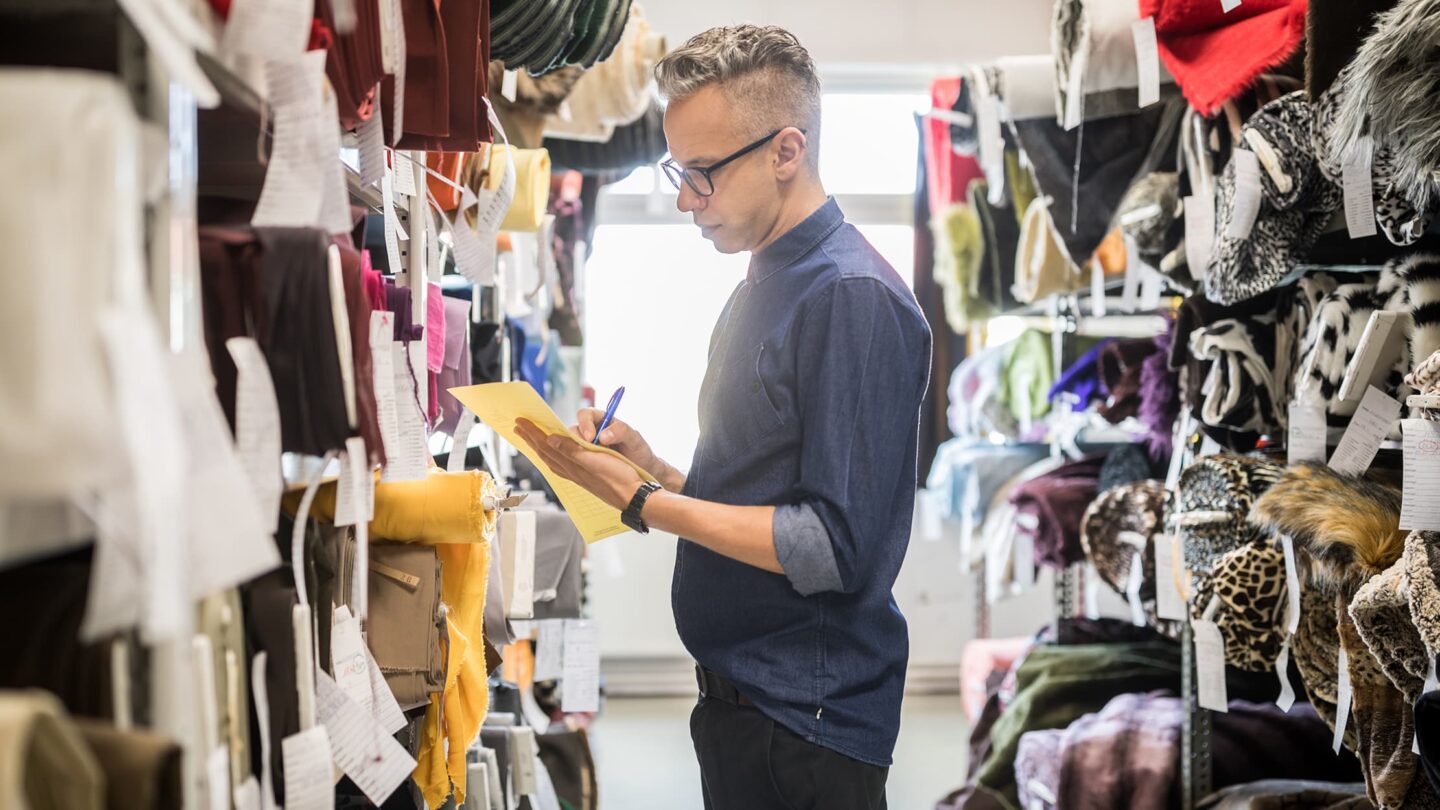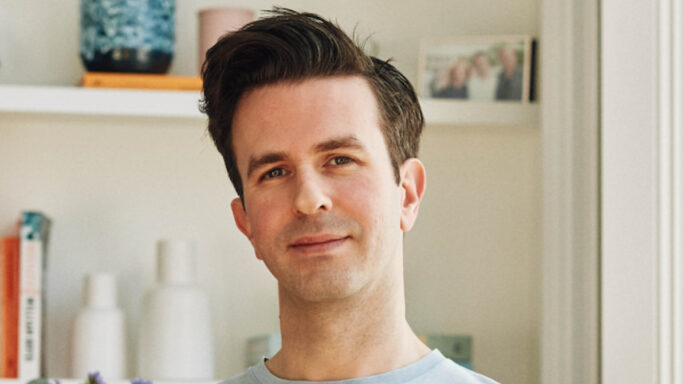Strategy, Legal & Operations
5 ways to be a more sustainable business
You can always be more sustainable—and it will not only improve your social conscience but your cash flow too.

Can you be a green business if you didn’t quite set out to be?
Maybe your unique selling point (USP) isn’t recycling surplus coffee grounds into fuel. Perhaps you don’t have a zero-emission tech product on the market.
Maybe you didn’t purposely set up a small business to help save the world.
However, no matter what you sell, you can always be more sustainable—and it will not only improve your social conscience but your cash flow too.
The market is there for the taking.
Here’s what we cover in this article:
- Reaching customers who care about sustainability
- Plan sustainable sourcing
- Work towards environmental certifications – and become a “Pending B Corp”
- Make use of energy-saving technology
- Be smart with eco-friendly packaging
- Work towards zero waste
Reaching customers who care about sustainability
According to consulting firm Deloitte, 45% of consumers bought more locally produced goods in 2021, and nearly 1 in 3 claimed to have stopped buying certain brands because they had ethical or sustainability related concerns about them.
Adding to the evidence that small, authentically sustainable startups could take a chunk of business from bigger, more opaquely run brands, IBM reports that 57% of consumers are willing to change their purchasing habits to help reduce negative environmental impact.
Agile, creative, local—small business owners are perfect for attracting this increasing market of green consumers who want transparency from their online shop or service.
Conscious consumers want to spend more and buy less from sellers who are showing how they are trying their best to be greener.
It doesn’t have to be perfect.
By optimizing what you have and making more responsible decisions (even at a micro level), you will not only help the planet, but your bottom line by appealing to a bigger customer base.
Here’s a list of suggestions that are manageable for time poor, cash-conscious businesses.
1. Plan sustainable sourcing
Customers want you to pay attention to your suppliers’ values as well as your own. They want to know where their products come from, as well as how they’re made and by whom.
It might be cheaper to buy and import plastic bottles for your perfume side hustle from a developing country where labor is cheap, for example, but could you upcycle glass bottles from a local brewery instead?
Some types of small businesses will have a bigger supply chain than others.
A simple exercise is to look at your suppliers, whether in the single or double digits, and judge if each of their standards for sustainability match yours.
Trace their practices and methods—how do they add to the planet, rather than take away from it?
Rank how socially, ethically, and environmentally conscious each cog in your supply chain is and think about what you are and aren’t prepared to compromise on when it comes to their environmental impact and treatment of workers.
It’s important to be realistic and weigh up your ambition against affordability.
Some suppliers will quote more for “clean” production in smaller quantities. You will decide which individuals or companies supply your business by weighing up the 10 “Cs”.
Think about the changes you can afford to make in the short term, and what you will have to do to achieve your long-term sustainability goals.
The 10 Cs
Competency: Their track record of success.
Capacity: The size of orders they can handle.
Commitment: Their commitment to you and to standards of quality.
Control: Their control over their own processes and supply chain.
Cash: Their financial strength, including liquidity and positive cash flow.
Cost: Their prices compared to similar suppliers’ prices.
Consistency: Their ability to produce the same products and quality repeatedly.
Culture: Their core values.
Clean: Their care of people and the environment.
Communication: Their quality and methods of communication.
How sustainable sourcing helps
Boost your brand reputation and broaden your target market. By setting out your sourcing standards and grading your suppliers for their sustainability, you will build customer trust and loyalty, which could boost profits.
Cut operating costs by reducing shipping and transportation. Forging local links and sourcing recycled materials will reduce your overheads.
Stand out from the competition. Customers are willing to pay more for products and services that are “hand on heart”, sustainable, but they need proof. So, make sure your website and social channels promotes how you are differentiating yourself in this way from the competition.
Examples of companies doing sustainable sourcing well
The Mercato Metropolitano food market in south London grows vegetables and herbs on site using hydroponics (growing plants in water without soil) and aquaponics (keeping to eat and produce waste which acts as the perfect fertilizer for growing plants).
Mercato Metropolitano also grow shiitake mushrooms using old coffee grounds, instead of importing and transporting supplies.
2. Work towards environmental certifications – and become a “Pending B Corp”
Accounting firm PWC says a “B Corp is to business what Fair Trade is to coffee”.
B Corp businesses are assessed by the not-for-profit B Lab, and accredited as such, for giving as much consideration to their social and environmental impact as they do to their financial returns.
The certification is given to for-profit organizations who achieve at least a minimum score against a set of social and environmental standards.
Used by more than 50,000 businesses, the B Impact Assessment (BIA) is a free, online platform that evaluates a company interacts with your workers, customers, community, and environment.
However, if you are a startup that has been trading for less than a year, you can apply for a special “Pending B Corp” status, which means you go through assessed a B Impact Assessment with best estimate answers and meet a legal requirement for certification.
For a fee, B Lab will grant your startup use of the Certified B Corp: Pending intellectual property to help publicly communicate your commitment.
After a year of operation, you can apply for the full certificate.
How environmental certifications helps
B Corp Certification is a powerful way to build credibility, trust, and value for your business—join a community of leaders who want to use business as a force for good and balance profit with purpose.
Signal to current and future investors that your company is already measuring and managing its social and environmental performance with the best tools available.
Demonstrate strong governance by adopting the legal framework early to protect your sustainable mission from the beginning.
Examples of companies with Pending B Corp status
Backpack is a consultancy that helps brands to be more authentic in their creative, communication and behaviors, and to see the business case in authenticity.
Started up by Sammy Burt after she was made redundant due to the coronavirus pandemic, she says it was “crucial to start as I mean to go on”.
She adds: “Ensuring that my business is conscious of and aligned to the UN’s sustainable development goals was a very easy and very early decision.
“Pending Certification for B Corp will hold me accountable to these and my core beliefs of how business can and should impact society and the planet.”
3. Make use of energy-saving technology
“But what will it cost?” is the number 1 question for small businesses nudged in the direction of innovative, energy-saving tech.
Don’t let the price put you off researching the menu of smart lights, thermostats and HVAC (heating, ventilation and air conditioning) whether you have an office or site premises, or work from home.
Take solar panels.
The upfront cost is important, but work out the overall cost benefits from these types of energy saving features—if your monthly bills go down as a result, then how long will it be before you break even?
With a bit of planning and patience, you could save money in the long run by carrying out a basic energy audit of your business, setting some goals, and choosing from any of these smart options.
Another way to track energy consumption is by exploring how the Internet of Things can work for you.
IoT, for short, is characterized as sensors, software, and other technologies that are used for the purpose of connecting and exchanging data with other devices and systems over the internet.
For example, if you are setting up a coffee shop or café, Monnit provides a temperature monitoring system that texts you if temperatures fall out of acceptable ranges.
Of course, choosing not to have a physical premises at all, if you able to, and selling online with an e-commerce website and app, plus working remotely, is a sure-fire way to cut your carbon footprint.
How technology helps
Save money in the long term: For example, a company with a 5% profit margin over 3 years, a $500-a-year saving from energy efficiency makes the same profit as $30,000 of extra sales.
Gain insight into equipment performance with the IoT: Depending on your industry, you might be able to prevent wastage by tracking your equipment or the environment you’re operating in.
Expand your market: By taking your business online and selling through an e-commerce platform, you will reach a new customer base beyond your immediate geography.
Examples of companies adopting technology well
By installing a $100 timer to its existing heating system, the Chinese Contemporary Arts Centre in Manchester is saving $4,363 and 17.6 tonnes of CO2e (carbon dioxide equivalent) a year. A $100 investment = a $4,363 saving.
4. Be smart with eco-friendly packaging
The explosion of online shopping is not good news for the environment.
A study by Oceana found that Amazon generated 465 million lbs of plastic packaging waste in 2019, alone.
But while eco-friendly options can be more costly, consumers are willing to soak up that expense in the overall product price, says industry publication, Packing Strategies.
50% of consumers would choose an eco-friendly packaging option at a higher price.
69% believe companies should be required by law to use eco-friendly packaging, even if it means a price increase.
75% of consumers want online retailers to offer more eco-friendly materials when packing their orders to minimize waste.
75% of international consumers would pay more for sustainable packaging.
To better appeal to this customer base, see if you can cut down on packaging (do your T-shirt products really need tissue paper and a plastic sleeve and then a cardboard box?) and swap out the packaging you do need for more sustainable options.
They include:
Biodegradable materials: These packaging materials break down within a moderate timespan.
Recyclable materials: These materials can be sent to the appropriate facilities for processing to be subsequently recycled into new raw materials.
Reusable materials: This is the most eco-friendly option as there is no waste generated and no plastic pollution.
FYI— – don’t use a mix of materials. If your packaging contains 2 different types of polymers, for example, that can render it unrecyclable. If you have to use plastic, sticking to 1 type is better.
Take a look at smart packaging too.
Rather than inserting a print catalogue or advertising inside the delivery, why not stamp a scannable QR barcode that sends your customer immediately to your website, where they can learn more about the product, find a special discount or leave feedback.
How being smart with eco-friendly packaging helps
Cut costs: Cutting down the amount of packaging you use and bundling products together for a customer will minimize excess waste and shipping, postage, and packaging-materials costs.
Increase sales and social media appeal: The majority of consumers want to buy a product that is sustainably packaged. Think about the social media marketing value of your packaging—can you ask customers to Snapchat or Instagram their haul and show off its stripped-back design? There’s all sorts of ways you could entice your customers to promote your new-look packaging on social media.
Deliver extra value: Smart packaging such as QR codes give the customer a bigger experience beyond the product itself.
Examples of companies being smart with packaging
Unpacked sells food with zero waste. Launched as a market stall in 2006 by Catherine Conway, it now has 3 stores where customers can purchase food in bulk and package it in their own reusable containers.
5. Work towards zero waste
Many small businesses are not only offering plastic-free delivery but refill services to customer, fuelling the return and refill revolution.
Popular environmental blog Reusablenation.com says keeping the return and refill scheme local also reduces transport costs associated with sending the packaging or container back for refill.
The authors behind the blog, Vicky and David, might be based in Australian but their content and insight is transferable for North American entrepreneurs too.
They say return and refill is a particularly popular service for selling cleaning products or beauty products like makeup.
North American startups take note!
In addition, if you sell on Amazon, there are 2 new programmes that the giant distribution company predicts will keep 300 million products in use each year, furthering its circular economy goals—and yours.
Small companies will be able to resell returned goods as used on Amazon, and they can offload the handling of returns and overstock merchandise to Amazon and its partners, through the new Fulfillment by Amazon Liquidations and Grade and Resell options. You can find out more here.
How working towards zero waste helps
Generate a new income stream: Could any of your waste by sold to other small businesses or industries?
Foster a local circular economy and retain customers: You can’t go far wrong if your mantra is “reduce, re-use, recycle”. By enabling the return and refilling of a buyer’s initial packaging, you can keep a loop of local and loyal customers.
Cut costs: If you offer a return and refill scheme you can automatically cut your packaging costs from your overheads.
Examples of companies working towards zero waste
The ethos of Bio-bean, founded by Arthur Kay, who was a guest on the Sound Advice podcast, is that “there is no such thing as waste—only resources in the wrong space.”
The company recycles waste coffee grounds to make Coffee Logs. Each carbon neutral log is made from the grounds of 25 cups of coffee and burns 20% hotter and longer than kiln-dried wood. Repurposing coffee waste generates 80% less emissions than if the grounds go to landfill.







Ask the author a question or share your advice